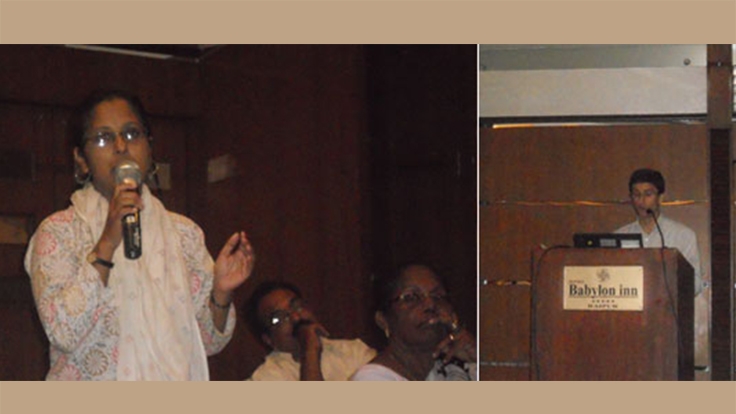Details of Discussion
Challenges of working in Maoist-affected areas
The discussion began with a participant representing a field NGO wanting to know whether the World Bank had a specific strategy to work in Maoist-dominated areas, considering that the Bank was keen to work in the remote and backward areas of the state. He explained that NGOs operating in such areas of Chhattisgarh state (such as south Bastar and Dantewara) faced a lot of problems, particularly in the context of a new law on public security and protection.
This point was elaborated by another participant who gave examples of how the authorities tended to view NGOs working in Maoist-affected areas as sympathizers. It was pointed out that a campaign in support of tribal rights and empowerment, specifically for families affected by development projects, or people who had not received benefits under the tribal forest rights legislation, had met with lukewarm response. The participant had also been subjected to harassment and interrogation by the law enforcement agencies on many occasions. The Forest Department was perceived as being unsympathetic to the plight of poor tribals. It was also mentioned that the World Bank had supported the state's afforestation efforts but the participant felt that the policy adopted by the state government was flawed and anti-farmer as there was pressure to growjatropha for fuel instead of food or cash crops.
Concerns Regarding Agriculture and Livelihood Protection
It was explained that the state has three eco-zones, viz., the north zone which has forests and is mineral rich (21 percent of the state's land area); the Chhattisgarh plateau which has forest-rich areas and has traditionally been agricultural, and is now attracting power plants (52 percent), and the Bastar zone that has about 50 percent forest cover and is plagued by insurgency.
Several participants emphasized that food security, lack of irrigation facilities and low productivity were major issues that needed strong support, particularly as the majority of agriculturists were marginal farmers with meager landholdings and dependent on rainfed agriculture.
A participant pointed out that the natural resource base of the state had to be judiciously used and the livelihoods of forest-dependent people protected. The onslaught of industrialization was gradually leading todiversion of farmlands and water to industry to the detriment of agriculture. Furthermore, the agriculture sector suffered from poor warehousing facilities and road connectivity, resulting in a good part of harvested crops going waste.
A participant pointed out that despite protests during public hearings and rallies, the state government was going ahead with the planned development projects. For example, over 40 power plants were coming up in Janjgir district. This had uprooted many farmers and though most were compensated with money, this did not ensure a sustainable livelihood. Rehabilitation would have been more meaningful with allocation of alternative farmland. Also a new dam was coming up in Janjgir district on the Mahanadi and Hasdeo rivers which was not only meant to provide water to the power plants (instead of agriculture) but was likely to lead to flooding during the rainy season, bringing devastation and misery to neighboring farmlands.

